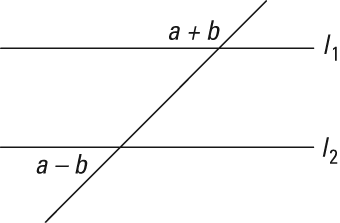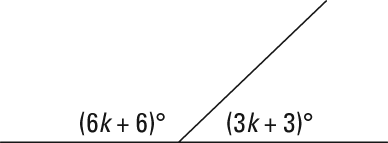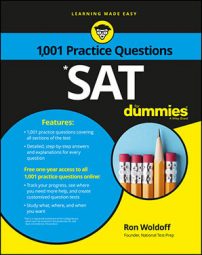In the following practice questions, you're asked to combine this property of supplementary angles with some algebra to get your answers.
Practice questions
- In the drawing, l1 is parallel to l2. What is the value of a?
A. 60 degrees B. 70 degrees C. 80 degrees D. 90 degrees

- In the following image, the angles are supplementary. What is the value of k?
A. 17 B. 18 C. 19 D. 20

Answers and explanations
- The correct answer is Choice (D).
If l1 is parallel to l2, all the acute angles are equivalent and all the obtuse angles are equivalent. This makes the angles marked a + b and a – b supplementary, meaning they total 180 degrees. Set up the equation and solve for a:

- The correct answer is Choice (C).
Supplementary angles total 180 degrees. Add the angles and set them equal to 180:


